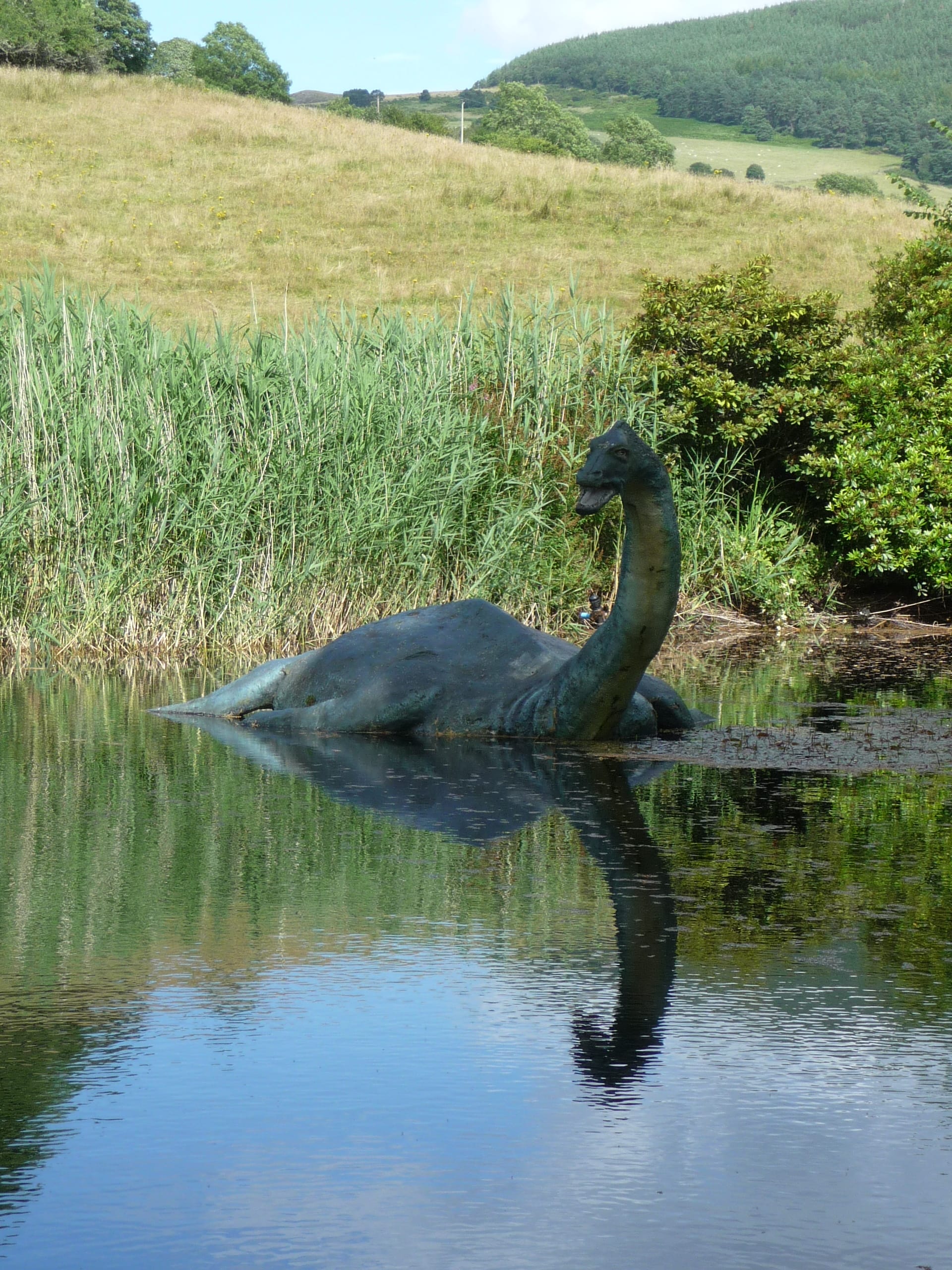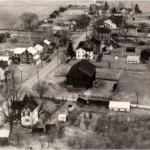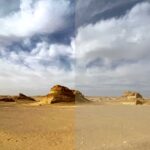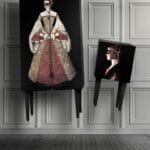Imagine standing on the misty shores of a legendary lake, its dark waters rumored to hide a creature of myth and wonder. That’s Loch Ness, the home of the elusive Nessie. Embark on a journey to uncover the truth behind Nessie, the Loch Ness Monster. From grainy photographs to advanced sonar scans, we’ll explore the evidence and the enduring fascination surrounding this enigmatic creature. Join us as we dive into the depths of Loch Ness!
Nessie Through the Lens: A Photographic History
For generations, people have sought to capture the definitive image of Nessie, the Loch Ness Monster. From blurry vintage photos to intriguing sonar readings, a collection of images claims to reveal this elusive creature. These pictures have propelled Nessie into global stardom, sparking debates among scientists and conspiracy theorists alike.
Early Sightings and the Iconic Photograph
Perhaps the most renowned Nessie photo is the one taken by Hugh Gray in 1933. The image seems to show a large, serpentine form gliding through the water. This single photograph ignited a worldwide obsession with Nessie, inspiring countless individuals to seek a glimpse—or at least a snapshot—of the creature.
Following Gray’s captivating image, a wave of other photographs emerged, each claiming to depict Nessie. Some of the most notable include the “Surgeon’s Photograph” and a 1975 sonar image captured by researcher Robert Rines. These images have been scrutinized and debated by experts, with opinions divided on their authenticity.
Examining the “Evidence”: What Does It Tell Us?
Most Nessie pictures fall into a few distinct categories:
- Blurry Shapes in the Water: These images capture vague forms on the water’s surface, leaving much to the imagination.
- Enigmatic Sonar Readings: Sonar devices have detected large, unidentifiable objects in the loch’s depths, adding to the intrigue.
- Humps and Necks Breaching the Surface: Some photographs appear to show a creature’s hump or elongated neck emerging from the water.
The Challenges of Photographing Loch Ness
However, Loch Ness presents significant obstacles for photographers and researchers. The loch is vast and its water notoriously murky, making clear photographs or sonar readings difficult to obtain. These factors contribute to the skepticism surrounding many Nessie images.
The Skeptics Weigh In
Skeptics approach Nessie sightings with a healthy dose of logic and critical thinking. They point out that many alleged Nessie photographs could be misidentified animals, unusual wave patterns, or even deliberate hoaxes. With advancements in technology, debunking even the most famous images, such as the “Surgeon’s Photograph,” has become increasingly possible.
A Mystery That Endures
Despite scientific skepticism, the enduring mystery of Nessie continues to capture our imaginations. The lack of definitive proof only fuels the fascination, making the Loch Ness Monster one of the most captivating enigmas of our time.
Are There Pictures of the Loch Ness Monster?
We’ve explored the legends and the blurry photos, but what about concrete proof? Have we ever truly seen Nessie? Well, that’s where the waters get as murky as Loch Ness itself.
People have claimed to spot the monster for centuries, with some even snapping photos. The “Surgeon’s Photograph” from 1934 caused quite a stir, but ultimately proved to be a clever fake.
And that’s been the case with much of the “evidence.” Sometimes, it’s simply mistaken identity. A playful otter, an unusual wave, or even a floating log can appear monstrous in the right light, especially on a misty day at Loch Ness.
While we haven’t discovered that perfect, irrefutable photo yet, the search hasn’t stopped. Modern technology like sonar and underwater drones allows us to explore the loch in unprecedented ways.
But the essence of the Loch Ness Monster goes beyond blurry images. It represents a mystery, a legend that sparks our imagination. It compels us to consider what might lie hidden beneath the surface, not just in Loch Ness, but in the world around us. Who knows, maybe one day we will find that undeniable photograph. Until then, the search, the wonder, and the legend live on.
Is the Loch Ness Monster Real? Examining the Evidence
We’ve all heard the tales and seen the grainy images—Nessie, the elusive beast said to lurk in the depths of Loch Ness. But is there any truth to these captivating stories, or are we chasing shadows? While there’s no shortage of people who claim to have encountered the monster, proving its existence has been another matter entirely.
Countless individuals have recounted their Nessie sightings, with some even presenting photos or videos as evidence. However, these often turn out to be blurry, inconclusive images or, in some cases, outright hoaxes. The infamous “Surgeon’s Photograph” serves as a prime example of fabricated evidence. This history of false alarms makes approaching any new “evidence” with a healthy dose of skepticism essential.
This isn’t to say that scientists have given up on solving the mystery altogether. They’ve deployed an array of advanced technology to scan the loch, including sonar, which uses sound waves to “see” beneath the surface. While sonar has detected some unusual shapes down there, nothing definitively screams “giant prehistoric monster.” Recently, researchers analyzed the DNA present in the loch’s water, hoping to find traces of something extraordinary. However, the results yielded no evidence to suggest that a large, unidentified creature calls Loch Ness home.
Even without concrete proof, the Loch Ness Monster has secured its place in the global imagination. The creature has starred in countless books, movies, and TV shows, achieving iconic status. And let’s be honest, who doesn’t love a good mystery? This enduring fascination has transformed Loch Ness into a popular tourist destination, proving that even legends can have a tangible impact.
So, is Nessie real? The jury’s still out on that one. We may never have a definitive answer, but that’s part of what makes this mystery so captivating.
Did They Find the Loch Ness Monster? The Search Continues
Throughout this exploration of Nessie, we’ve encountered intriguing claims and blurry images. Yet, we’re still seeking that one piece of undeniable evidence to confirm that she’s more than a myth. Could she be hiding in the depths of Loch Ness? It’s a question that continues to fascinate and intrigue us.
Some theorists believe Nessie might be a plesiosaur, an ancient marine reptile thought to be extinct. Picture a massive sea serpent navigating the depths—that’s a plesiosaur! Others propose she could be a giant eel or sturgeon, both species capable of reaching impressive sizes. And then there are those who believe the entire phenomenon is an elaborate hoax designed to attract tourists and generate excitement.
Recall the famous 1934 image of Nessie captured by Hugh Gray, seemingly showing a long, mysterious shape in the water? While many initially believed it to be authentic, it was later revealed to be a clever fabrication.
Fast forward to 2018, when a team of scientists arrived at Loch Ness equipped with cutting-edge technology. They deployed sonar, essentially underwater radar, to search for anything unusual. While a giant monster remained elusive, they did discover some fascinating features, including underwater caves and a large rock formation. It makes one wonder what else might be hidden beneath the surface.
The quest for Nessie is far from over. Researchers and enthusiasts continue to employ advanced technologies like drones and underwater cameras hoping to catch a glimpse of the elusive creature. For now, the Loch Ness Monster remains an enigma, a puzzle that continues to capture our imaginations.
Have an interest to see the aftermath of the fierce battle between Pablo Escobar and the police? Click pictures of dead pablo escobar to find out.
You will never believe these astonishing pictures of komodo dragons that will leave you with amazement and shock.
- Unlocking Francis Alexander Shields’ Finance Empire: A Comprehensive Biography - July 12, 2025
- Unveiling Francis Alexander Shields: A Business Legacy - July 12, 2025
- Francis Alexander Shields’ Business Career: A Comprehensive Overview - July 12, 2025















